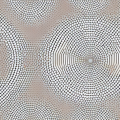The unit circle is an incredibly important tool in mathematics that is used across all levels of mathematics. Not only is it a useful tool for understanding trigonometric functions and the relationship between angles and circles, but the unit circle also serves as an essential tool for problem solving. Understanding the unit circle can be daunting, though thankfully visual aids can help to make the process much easier. This article will provide an image guide to understanding the unit circle, from what it is to how it’s used in daily problem solving.
What Is the Unit Circle?
The unit circle is a circle graphed with a radius of 1. This means that any points on the unit circle are at a distance of exactly one from the center. It does not matter how large or small the circle is; any points on the unit circle are one unit away from the center. This property makes it possible to calculate basic trigonometric functions without having to use a calculator. The unit circle is a useful tool to learn and understand because it makes it easier to calculate exact values of trigonometric functions.
Key Points of the Unit Circle
The unit circle has a few key points that are important to understand. The first is the center of the circle, which is located at the origin on a coordinate plane. The second point is the point of the circumference that is located exactly one unit away from the center. This point is known as the initial point, and it is what starts off the rest of the unit circle. The third point is known as the terminal point, and it is located two units away from the origin. Finally, the fourth point is the y-intercept, It is located one unit away from the origin on the y-axis.
These four points serve as reference points when graphing or solving problems involving the unit circle. They can be used to represent angles, distances between points, or other trigonometric functions used in problem solving.
Visualizing the Unit Circle
Visualizing the unit circle can be quite helpful when understanding and using the unit circle. There are several different types of images that can be used to better understand the unit circle: standard diagrams, diagrams with angles, diagrams with coordinates, diagrams with points, and diagrams with distances. Each type of diagram can be used to visualize different aspects of the unit circle such as angles, distances, and points.
Standard diagrams are used to show an overview of the unit circle. This type of diagram typically shows the four points mentioned above–the origin, the initial point, the terminal point, and the y-intercept–as well as a few other important points such as radians, degrees, and quadrants. Diagrams with angles are used to show how angles are measured on the unit circle and how they can be used to calculate exact trigonometric values. Diagrams with coordinates are used to show how points along the circumference of the unit circle can be identified using coordinates. Diagrams with points are used to show how points along the circumference can be labeled using a set of numbers such as 1, 2, 3, 4, etc., and how these numbers can be used to identify specific points. Finally, diagrams with distances are used to show how distances between two points along the circumference can be calculated using this numerical labeling.
Radians and Degrees in the Unit Circle
The radians in the unit circle are used to measure angles between a given point on the circumference and the origin. A full rotation around the unit circle is equal to 2π (or 6.28) radians while a full rotation around a standard circle is equal to 360° (or 360°). This means that a radian is equal to 1/360th of a degree, so one radian is equal to approximately 0.017453°.
The radians in a unit circle can also be used to measure angles in other circles. For example, if an angle in a given circle has an arc length of 2π radians, then that angle would be equal to 360° in a standard circle.
Trigonometric Functions on the Unit Circle
Trigonometric functions are important when dealing with the unit circle. Trigonometric functions can be used to calculate distances between points or angles in the unit circle and can be used to solve problems involving circles or trigonometry in general. The trigonometric functions on a unit circle are sine (sin), cosine (cos), tangent (tan), cosecant (csc), secant (sec), and cotangent (cot). Each of these functions has its own set of rules and uses that can be applied when working with a unit circle.
Using the Unit Circle in Problem Solving
The unit circle can be used to solve problems involving trigonometry or circles in general. Problem solving using the unit circle involves measuring an angle using either radians or degrees and then using trigonometric functions to calculate exact values for things such as distances between points or angles in different locations. For example, if you have a triangle with two sides that measure 3 units in length and an angle between them measuring 60°, then you can use the unit circle and trigonometric functions to calculate the length of the third side (which would be 2 units).
Explaining the Pythagorean Theorem Using the Unit Circle
The Pythagorean theorem states that: “a^2 + b^2 = c^2”, meaning that if you have two sides of a right triangle (a and b) then you can use that equation to calculate the length of the third side (c). This theorem can also be explained using the unit circle. The Pythagorean theorem can be simplified by saying that if you have two sides of a right triangle (a and b) then you can calculate the length of the third side (c) by measuring out a distance of one unit from either side (a or b). This distance will then be equal to c.
Exploring Other Uses of the Unit Circle
The unit circle has many different uses beyond what this article has explored so far. It is an excellent tool for measuring angles and distances between points on a circle or on a coordinate plane and can help to solve complex problems involving circles. Furthermore, it can also help explain geometrical concepts such as inscribed angles and can help people visualize what’s happening when they solve trigonometric problems.
Conclusion
In conclusion, understanding and using the Unit Circle can be extremely helpful when solving problems involving circles and trigonometry. This article provided an image guide to learning and understanding this important math tool and gave visual examples of how it works. The four main points along with its various uses were thoroughly discussed in order to provide readers with all the necessary information needed in order to effectively work with the Unit Circle and use it for problem solving.





